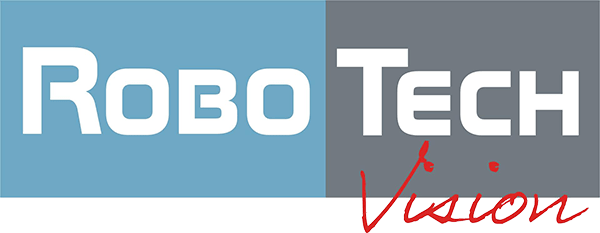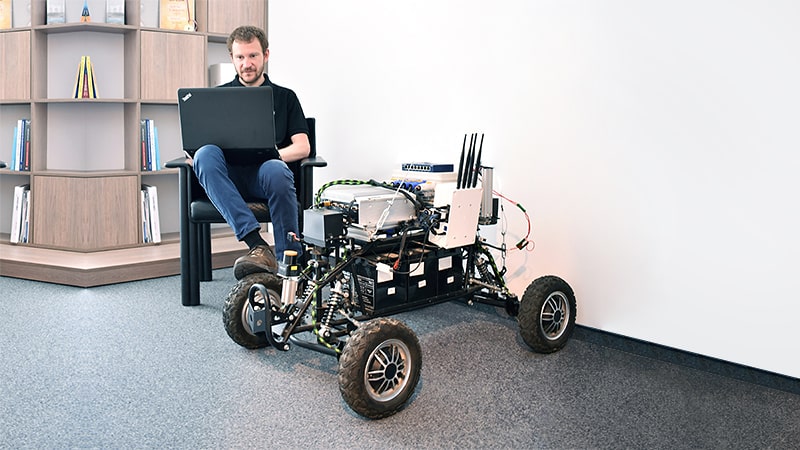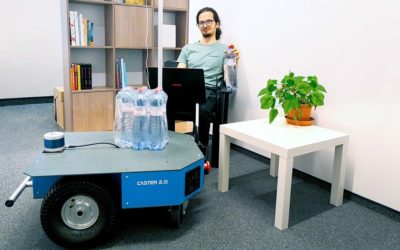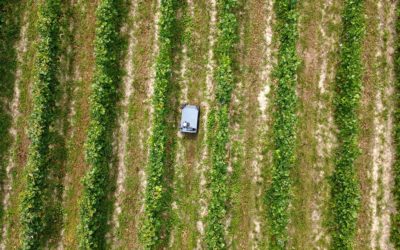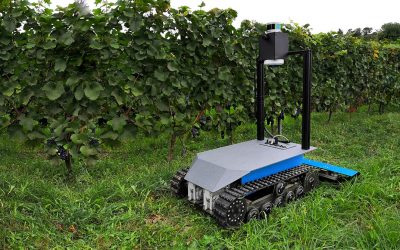CHARACTERISTICS
Our team
RoboTech Vision consists of six members, graduates in the field of robotics, who have many years of experience in its development.
Experience
The company’s team has ten years of experience with a variety of devices, types of robotic chassis, and intelligent software.
Robotic platforms
RoboTech Vision develops its algorithms on several types of test platforms, making company´s solutions intelligent and universal.
2013
Software and application development
The company RoboTech Vision Ltd. was established in 2013 and its executive managers are three graduates in the field of robotics. At first, they achieved success in various areas of industry and IT individually, but after studying, they decided to merge and start developing robotics in Slovakia. The company initially focused on software and application development. Initial smaller projects financed the development in the field of mobile robotics, which is the current main focus of the company. Gradually, the team managed to develop their first platforms, which were the mobile robots Androver I and its later successor Androver II.
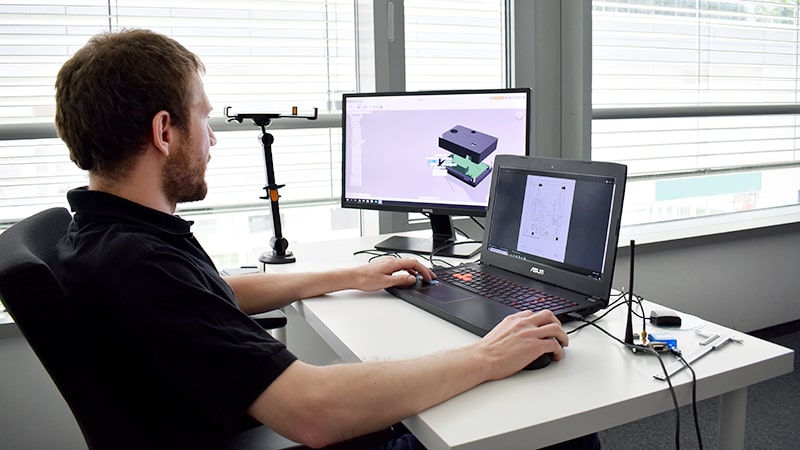
2014 – 2015
The first Androver I mobile robot
A year after the company’s establishment, its managers designed the first robot called Androver I. The project was created from the idea of connecting a rover to a smartphone with the Android OS and using device sensors to develop autonomous navigation algorithms. However, the company eventually decided to develop autonomous navigation on the larger, more durable Androver II model. Thanks to its smaller size, Androver I was used in a simulated ESA space mission, where it ranked among the best projects. Its goal was to survey volcanic terrain in Hawaii, which simulated the surface of the Moon.
2016
Simulation software project
RoboTech Vision participated in the development of a military simulation software in 2016. The company provided subcontracting of the system, which is based on the laser game principle, but is used for a highly realistic training of professional troops in outdoor conditions. The main task was to display GPS location, status and detailed information about 500 soldiers equipped with special vests in real time on the map. The simulation software is still used by several foreign military units and has helped the company finance the development of the Androver II robotic platform.
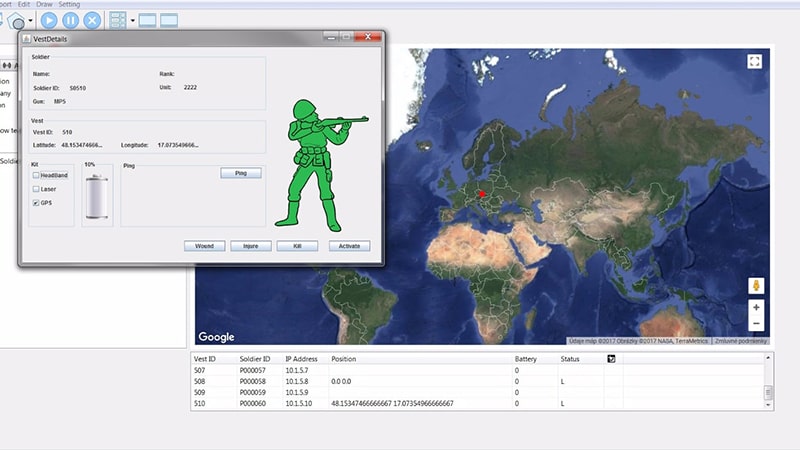
2017
More durable Androver II robot
Since 2017, the company has been developing the Androver II mobile robot from the ground up. The prototype of a four-wheeled robot served as a platform for the development of autonomous navigation algorithms on the road and in the vineyard. Androver II won first place in an international competition in the category of autonomous navigation. The robot was exceptional with its Double Ackerman suspension chassis, which ensured easier passage through the terrain. The use of BLDC HUB motors was also innovative, thanks to which the robot had a quiet and maintenance-free operation. Androver II represented the achieved know-how of the company and also served for presentation purposes. For example, it underwent testing at ESA.
2018
Husky A200, a robot with different kinematics
RoboTech Vision was sought to develop universal algorithms that can be easily applied to a variety of devices. Therefore, a year after the development of the Androver II robot, the company decided to adapt its autonomous navigation algorithms also for devices with a different, differential chassis. Team used a Husky A200 mobile robot by the Canadian company Clearpath. RoboTech Vision also began developing artificial intelligence, face or object recognition and voice commands. Intelligent algorithms were debugged on two robotic platforms. The company thus sought to develop a universal device that would achieve a high level of autonomy and intelligence.
2019
AI, autonomous drones and a vineyard
After developing intelligent algorithms for robots, the company decided to deploy software elements to other devices. An example was the intelligent security system. In addition to recognizing people, faces, vehicles or their registration numbers, the system was able to open door locks monitor the entry of people into the building. If necessary, the system could be connected to an autonomous robot or drone. Thus, the company also began to develop autonomous navigation algorithms for drones. The company began to adapt its navigation algorithms for robots in agriculture in 2019. An example is autonomous navigation of a robot in a vineyard.
2020
The first own sensor RTV Sensor Box
RoboTech Vision realized that, in addition to developing a universal algorithm, it was necessary to develop a universal device that was easily applied to a robot and gave it its own “eyes and mind”. Therefore, company developed the RTV sensor Box which allows the robot to plan a route, autonomous driving to the destination even through complex intersections, path segmentation, detection of static and dynamic obstacles or object recognition. The sensor combines a 360° camera, a front camera and a 3D scanner. The individual parts of the sensor are calibrated to each other, which ensures the high output accuracy.
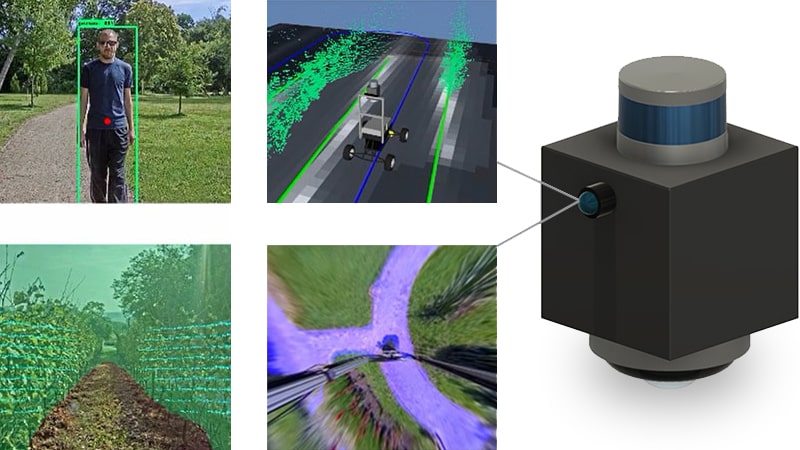
2021
Building a robotic portfolio
After the development of the universal sensor, the company also tried to develop robotic platforms based on the knowledge gained from testing platforms that could use all intelligent software. The company therefore developed the Caster robotic platform, which in combination with a germicidal UVC lamp was used as a disinfection solution. The company thus has solutions for both outdoor and indoor environments, which can also be modified from open R&D platforms to fully autonomous devices if required.
2022
Robots also for the defense industry
The company intensified its focus on adapting the autonomous navigation algorithm along the road and in the vineyard towards the internal environment. It has also developed a docking algorithm that makes the device completely self-sufficient. Such a solution is suitable for a variety of purposes, including for example, in times of pandemics. RoboTech Vision was selected by the Ministry of Defense of SR for security discussions, where they ranked first among the V4 countries. For this purpose, it has developed another, so far the smallest, Ringo indoor robotic platform equipped with AI algorithms.
DEVELOPMENT NEWS
Examples of artificial intelligence use: The robot recognizes faces and distributes drinks
Examples of AI use: The robot recognizes faces and distributes drinksMarch 23, 2022 | Development Artificial intelligence has a wide range of uses. It can help people to sort data, help with image processing and automate various other processes....
Autonomous navigation and charging. We develop docking system for mobile robots
Autonomous navigation and charging. We develop docking system for mobile robotsDecember 21, 2021 | Development Docking is an important part of autonomous navigation. Without it, robots would not be completely self-sufficient. RoboTech Vision is...
Crawler robot moves autonomously in the vineyard and mows the grass
Crawler robot moves autonomously in the vineyard and mows the grassSeptember 22, 2021 | Development The Crawler mobile robot, which the company recently included in its portfolio, has also found application in vineyards. It thus replaced the...

The company focuses on the development of autonomous robots with AI elements. It strives to develop universal solutions for various tasks, industries and environments.
SOFTWARE
AON algorithm
AVN algorithm
ADN algorithm
ORC algorithm
PRODUCTS
Caster
Crawler
RTV sensor Box
